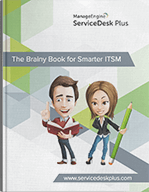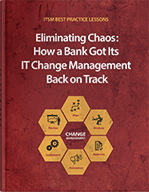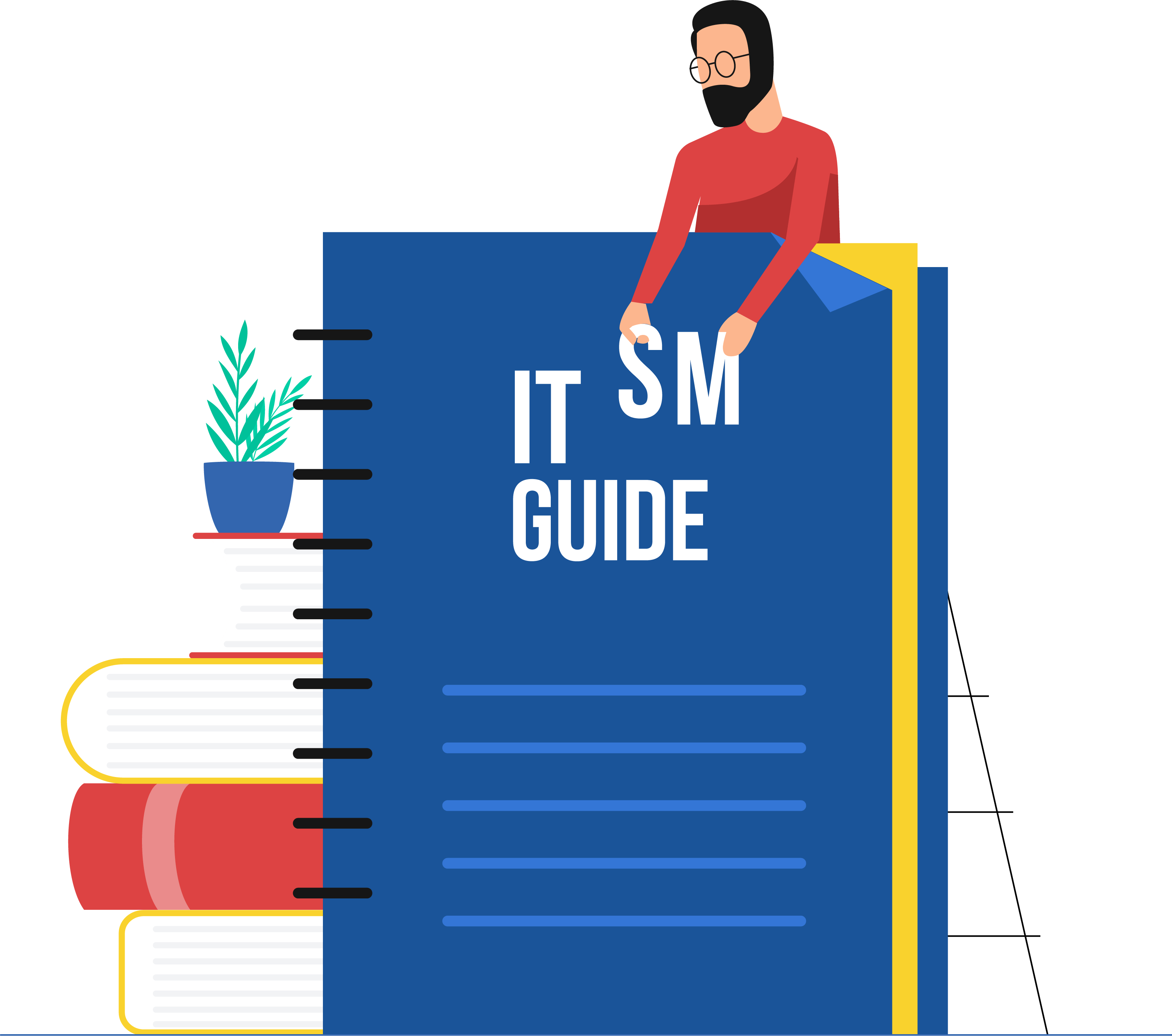The final chapter of this ITSM guide, the glossary, brings to you all the important ITSM terminology.
Glossary

IT service management (ITSM)
The implementation and management of quality IT services that meet the needs of a business. IT service management is performed by IT service providers through an appropriate mix of people, processes, and information technology.
Incident management
The process responsible for managing the life cycle of all incidents. Incident management ensures that normal service operation is restored as quickly as possible and the business impact is minimized.
Problem management
The process responsible for managing the life cycle of all problems. Problem management proactively prevents incidents from happening and minimizes the impact of incidents that cannot be prevented.
Change management
Transitioning something newly developed (i.e. an update to an existing production environment or something entirely new) from the service design phase into regular service operation, all while aiming to ensure that standardized methods and procedures are used for efficient handling of all changes.
Asset management
A generic activity or process responsible for tracking and reporting the value and ownership of assets throughout their life cycle.
ITIL®
A set of best-practice publications for IT service management. ITIL® gives guidance on the provision of quality IT services and the processes, functions, and other capabilities needed to support them. The ITIL® framework is based on a service life cycle and consists of five life cycle stages (service strategy, service design, service transition, service operation, and continual service improvement), each of which has its own supporting publication.
Software as a service (SaaS)
A software licensing and delivery model in which software is licensed on a subscription basis and is centrally hosted by the vendor. It is sometimes referred to as "on-demand software."
Key performance indicator (KPI)
A metric that is used to help manage an IT service, process, plan, project, or other activity. KPIs are used to measure the achievement of critical success factors. Many metrics may be measured, but only the most important of these are defined as KPIs and used to actively manage and report on processes, IT services, and activities. Help desks should select KPIs to ensure that efficiency, effectiveness, and cost-effectiveness are all managed.
Service-level agreement (SLA)
An official commitment that prevails between a service provider and a client. When defining SLAs, the service provider and service user agree on particular aspects of the service, including quality, availability, and responsibilities.
On-premises
Software that is installed and runs on computers within the premises (in the building) of the person or organization using the software, rather than at a remote facility such as a server farm or cloud.
Cloud
Refers to using a network connection to access applications and data stored in other locations, often by accessing data centers using wide area networking (WAN) or regular internet connectivity.
Self-service portal
A self-service portal is a website or app that enables users—whether they're customers, employees, suppliers, or partners—to perform high-value transactions, from simple account updates to paying bills, managing support tickets, and more.
Service catalog
A database or structured document with information about all live IT services, including those available for deployment. A service catalog is part of a service portfolio and contains information about two types of IT services: customer-facing services that are visible to the business, and supporting services the service provider requires to deliver customer-facing services.
Knowledge base (KB)
A logical database containing data and information used for knowledge sharing and management.
Incident
An unplanned interruption to an IT service or reduction in the quality of an IT service. Failure of a CI, even if it has not yet affected a service, is also an incident (e.g. failure of one disk from a mirror set).
Root cause analysis (RCA)
A methodology used in problem management to analyze the core issue (root cause) that led to a series of incidents. The root cause is an element or factor that, when removed, restores normalcy and prevents the problem from reoccurring.
Known error database (KEDB)
A repository of previously identified and recorded errors or root causes with tested workarounds, which can be used as reference for similar problems in the future.
Workaround
A temporary solution to a known error that minimizes or eliminates the impact of an incident or problem.
Response time
The time taken to respond to a logged ticket. The first response time refers to the time taken to respond to a ticket for the very first time after it was logged.
Resolution time
The time taken to resolve an incident or problem and bring it to closure.
Project management
An organized process that involves the planning, organizing, managing, and controlling of IT projects to accomplish specific IT goals.
Enterprise service management (ESM)
Managing a service organization with a suite of ITSM tools and applications applied to ITSM software to optimize its performance. ESM enables departments within an organization to stay connected to each other and to external resources, thereby functioning as a single unit across all facets of service management.
This is the third and the final chapter of the ITSM guide, which gives you an overview of the basic concepts of IT service management (ITSM) and provides you with an understanding of all-things ITSM, including ITSM processes and workflows, benefits, best practices, and how to implement ITSM solutions
You can check out the previous sections of the guide below, in case you missed any:
Free Download : ITSM handbook and Best practices
An exclusive package of ITSM resources
-

The Brainy Book for Smarter ITSM
-

ITSM Best Practice Lessons

